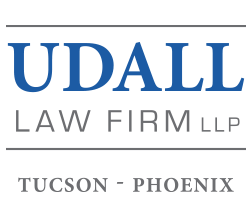So, what is “Intellectual Property”? The Oxford Dictionary defines it as: A work or invention that is the result of creativity, such as a manuscript or a design, to which one has rights and for which one may apply for a patent, copyright, trademark, etc. Wikipedia defines it as: Creations of the intellect for which a monopoly is assigned to designated owners by law. Some common types of intellectual property rights (IPR) are copyright, patents, and industrial design rights; and the rights that protect trademarks, trade dress, and in some jurisdictions trade secrets: all these cover music, literature, and other artistic works; discoveries and inventions; and words, phrases, symbols, and designs.
In the legal sense, “Intellectual Property” includes those intangible rights protecting the products of human intelligence and creation, such as copyrightable works, patented inventions, trademarks, and trade secrets.
A Trade Name is a particular word or phrase used to identify a business, i.e., the official name under which a company does business. A trade name may be a “doing business as” name, assumed name, or fictitious name for the business if the formal name of the business entity is different. A trade name is the name a company uses to: open bank or other accounts; obtain business credit cards; sign contracts; and pursue or defend a claim in court.
A Trade Mark is a particular “word, phrase, symbol or design, or a combination of words, phrases, symbols or designs, that identifies and distinguishes the source of the goods of one party from those of others. A trademark gives a company or person the legal right to go to court to stop everybody else from using the same “word, phrase, symbol or design, or combination of words, phrases, symbols or designs” to identify the goods produced by the company or person which have been listed in the trademark registration. ”
A Service Mark is a particular “word, phrase, symbol or design, or a combination of words, phrases, symbols or designs, that identifies and distinguishes the source of the services of one party from those of others. A service mark gives a company or person the legal right to go to court to stop everybody else from using the same “word, phrase, symbol or design, or combination of words, phrases, symbols or designs” to identify the services offered by the company or person which have been listed in the trademark registration.
The term “Trademark” is commonly used to denote both trademarks and service marks.
Not every trade name (or business name) must be trademarked. Trademark protection is wise if the trade name is used in commerce to advertise, promote or identify the source of goods or services the company produces. For example, “Google” is both a trade name (there is a corporation called “Google”) and a trademark (because Google puts its name on its products and services to identify the source). On the other hand, TJ Maxx is a trademark for retail department store services, but is not a trade name. The actual name of the company is TJX Operating Companies, Inc., which is a trade name that consumers would not typically identify with what TJ Maxx does.
However, just having the name registered with the Arizona Corporation Commission as a name of your business does not afford protection against someone using the same name as a trademark. For example, person A started marketing her handbags under the name “Red House” in 2000 without forming a legal entity. Person B could form a legal entity “Red House” and register it with the ACC in 2004 because, according to the ACC, this name is still available. However, person B would not be able to use this name as a trademark to identify the source of handbags because person A already uses this name for this purpose and has a common law trademark right. The reverse could also be true. If person A registered her business with the ACC under the name “Red House” in 2000, there may be an argument made that if person A does not use this name as a trademark, i.e., for the marketing her handbag, then that same name may be available to person B wishing to use it as a trademark to advertise and sell handbags. In practicality, the confusion to the public which would result would make this a difficult result, but not an impossible argument to make.
Confusing? Well, then contact Marian Abram at Udall Law Firm. She can assist with your intellectual property needs.

